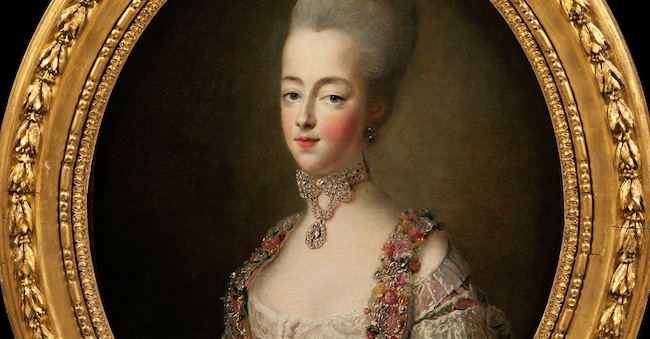Marie Antoinette: The Story and Style of a Queen Between Elegance and Tragedy


Marie Antoinette, Queen of France for just under twenty years, reigned supreme over style and fashion for centuries. Having died on the guillotine at the age of 37, she lived on as a symbol and remains an eternal inspiration for designers, artists, directors, and stylists. The Victoria & Albert Museum in London is dedicating an exhibition today to the Austrian Archduchess, who became one of the most talked-about and misunderstood, most persecuted, and misunderstood queens in history.
Commendable for avoiding historically apocryphal clichés (such as the infamous, yet never-uttered, phrase, "If they have no bread, let them eat brioche"), the exhibition is equally admirable in presenting the "real" Marie Antoinette. The first part of the exhibition, by far the most extraordinary, takes us back to her time, with dresses, jewelry, furniture, fans, and other objects that belonged to the queen, such as her jewelry box, her favorite armchair, and her harp, some of which have never been exhibited before. Many objects, lost in the chaos of the French Revolution, are reunited here for the first time.
"All eyes will be on you," Empress Maria Theresa wrote to her fourteen-year-old daughter, sent to marry the Dauphin of France. And so it was: curious eyes, envious eyes, malicious eyes. The young princess, however, rather than following the rules and conforming to the fashions of the time, decided to create her own style. Versailles became her stage, on which she displayed extraordinary gowns, embroidered silk creations adorned with ribbons and bows, hairstyles that became increasingly complex and sophisticated, and silk slippers decorated with diamond buckles.
The V&A displays a whole range of dresses from the period, in iridescent silk à la française , more voluminous à la polonaise , more sober in stripes à l'anglaise . And the jewels, cascades of diamonds , the voluminous hair styles with padding and decorations, the precious fans.
Photo gallery 19 photos
Then came the change in style: Marie Antoinette, who had found refuge in the faux-bucolic world of the Petit Trianon, opted for a simpler look: a ribbon in her loose hair, a straw hat, and a white muslin dress. The same dress she wore in a 1783 portrait by Elizabeth Vigée Le Brun, which caused a great scandal at the time ("the queen in déshabillé!" cried the right-thinking), but the chemise à la reine became the height of elegance. The same was true for her interior design choices, such as porcelain decorated with tiny flowers or toile de Jouy. The queen's example, an influencer ante litteram, was followed by all.
In addition to her role as a master of style, the exhibition also reveals lesser-known aspects of the queen, such as her passion for music, her skill in playing the harp and piano, and the support she gave to composers and musicians of the time, including the Chevalier de Saint-George, a mulatto son of a slave, or her determination to breastfeed her children instead of handing them over to a wet nurse, an example later followed by the women of the court.
From the pastel colors, shimmering silks, and diamonds of the first rooms, you pass through a blood-red corridor to a dark circular room that recalls the end of Marie Antoinette, a victim first of slanderers and then of the revolution. On display are the simple white cotton chemise the queen wore in prison, her last desperate message written on the morning of her execution ("My God, have mercy on me, my eyes have no more tears to weep for you, my poor children, farewell, farewell..."), a lock of her blond hair in a crystal medallion alongside her son's hair, and a rare and chilling relic: the blade of the guillotine that beheaded her on October 16, 1793.
The second part of the exhibition concerns the first expression of what became the cult of Marie Antoinette, when Empress Eugénie in 1867 organized the first exhibition dedicated to her at the Petit Trianon and imitated her style in her clothing and furnishings.
The third section is dedicated to modern interpretations of the queen's style in over thirty films, television series, and fashion collections. From Sofia Coppola's celebrated film (with shoes designed by Manolo Blahnik , the exhibition's sponsor and a self-proclaimed Marie Antoinette aficionado) to the recent Netflix television series, and even on the runways of numerous designers, from Moschino with its cake-like dresses to Vivienne Westwood with her reinvented crinolines, from Dior's 2006 collection inspired by the French Revolution to the Petit Trianon dress created by Karl Lagerfeld for Chanel to the 18th-century-inspired floral gown created by Alessandro Michele for Valentino Haute Couture 2025. At the center of the exhibition's final room is the Marquise Masquée, a spectacular 1998 dress by John Galliano for Dior inspired by the queen. "We had a beautiful dream," wrote Marie Antoinette shortly before her death. The beautiful dream continues, in the galleries of the V&A.
“Marie Antoinette Style,” V&A South Kensington, London, until March 22, 2026. www.vam.ac.uk/exhibitions/marie-antoinette
News and insights on political, economic, and financial events.
Sign upilsole24ore





